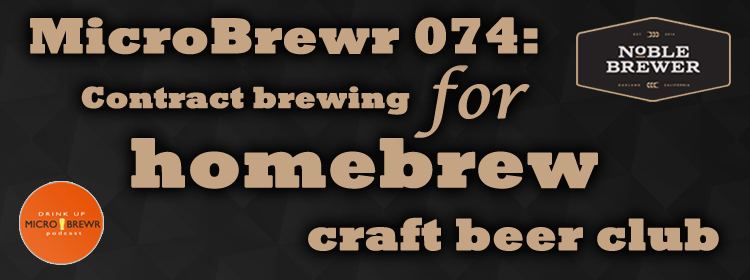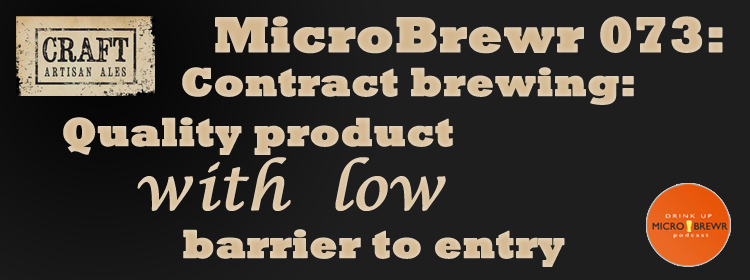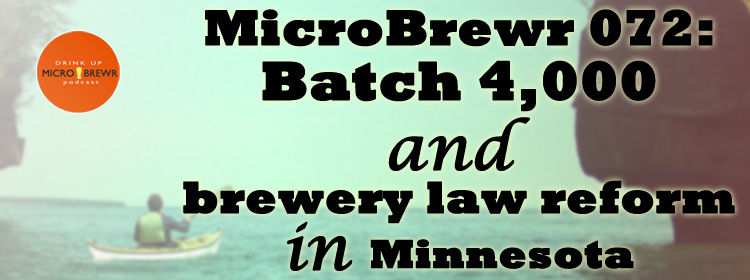MicroBrewr 074: Contract brewing for homebrew craft beer club
Podcast: Play in new window | Download | Embed
Subscribe: RSS
Noble Brewer is an online craft beer club featuring homebrewers’ best beers. It’s not exactly legal to sell homebrew by mail, so Claude Burns at Noble Brewer connects the homebrewer with a commercial brewery. Then they ship great homebrew from their base in Oakland, California.
If you want your homebrew to be featured in one of Noble Brewer’s quarterly shipments, here’s how Noble Brewer picks the homebrewers:
- Homebrewing competitions and BJCP results
- Willingness of the brewer to share her story
- Whether the recipe will scale
- Style variety in relation to the past picks
Read: Homebrew craft beer club. And then I never left the house.
I think it’s pretty aweome, but the main reason we talked with Claude is to find out for to start a contract brewery.
“There are a lot of great brands and great beers out there that are made by people who don’t own their own brewery,” says Claude. “There is also a lot of great beer companies that do own their own brewery, but [production of their own beer] is very small. The vast majority of their beer is contract brewed.”
Other contract breweries—or breweries that got their start as a contract brewery—on MicroBrewr Podcast:
Of course, to sell alcohol, you need to have some kind of license. The process and licensing is different in every state. So Claude advises that you check with a lawyer. Usually a contract brewery is set up like a distributor.
In California, Claude says, most contract breweries would use a Type 17 license from California Department of Alcoholic Beverage Control. This allows you to have beer made for you by another brewery, then you can sell it to retailers.
“The ABC is very willing to work with you,” says Claude. “You go to them, and tell them what you want to do, they’ll be very willing to work with you to make sure you do things the right way.”
Be very detailed in telling your state licensing agency what you want to do. They’ll suggest the license that you need. Then ask a lot of questions to make sure you’ll be able to do the things you intend to with a given license.
Check this page for a list of state alcoholic beverage control boards.
Next you’ll nee to find a contract brewery to manufacture your product:
- Ask breweries whether they have excess capacity for your beer.
- Network with other brewers to find a brewery that makes contract beer.
Choosing the brewery to work with:
- Look for a company that shares your same goals.
- View the arrangement as a long term, mutually beneficial relationship.
- Check references of the brewery, and trust recommendations of others.
Depending on your agreement, the different responsibilities will lie with one party of the other. Sometimes the brewery will do more, sometimes you’ll need to do it. So check with your brewery to see whether they’re expecting you to provide your own ingredients and packaging, whether you’ll need to get TTB approval on your labels, or other tasks.
“If you’re a contract brewer, and that’s going to be more of your long-term strategy,” advises Claude, “you’re going to do things like [contract directly with a hop supplier] so you’re going to have your own source of hops for your beers.”
“If you want to put a ton of really restrictive terms in an agreement, as a [small startup] contract brewer you may be less likely to enter that agreement. It’s really about developing that working relationship with each other and making sure that you have the same goals in mind and you’re working toward something long-term.”
“Everybody I have met has been more than happy to share their knowledge.” [Tweet This]
Listener question:
From Dan: How hard/easy was the licensing from the state? What local regulations did you have trouble with? Were the locals helpful in setting up the business?
Book recommendation:
- Building Strong Brands by David A. Aaker.
- The 21 Irrefutable Laws of Leadership: Follow Them and People Will Follow You (10th Anniversary Edition) by John C. Maxwell.
- Good to Great: Why Some Companies Make the Leap…And Others Don’t by Jim Collins.
Check out the entire list of recommended books, click here.
An upcoming beer style:
Saison
Other resources:
- U.S. Alcohol and Tobacco Tax and Trade Bureau (TTB).
- Directory of State Alcohol Beverage Control Boards.
- List of License Types, California Department of Alcoholic Beverage Control.
- Brew Hub, where craft brewers go to grow.
- Your Local Beer Isn’t as Local as You Think, And maybe that’s OK., Adrienne So, Slate, August 13, 2013.
- Pretty Things Beer and Ale Project, Boston, Massachusetts.
You can reach Claude Burns and Noble Brewer at:
Sponsors:
Support MicroBrewr
Help keep MicroBrewr on the air. CLICK HERE for ways you can help.







